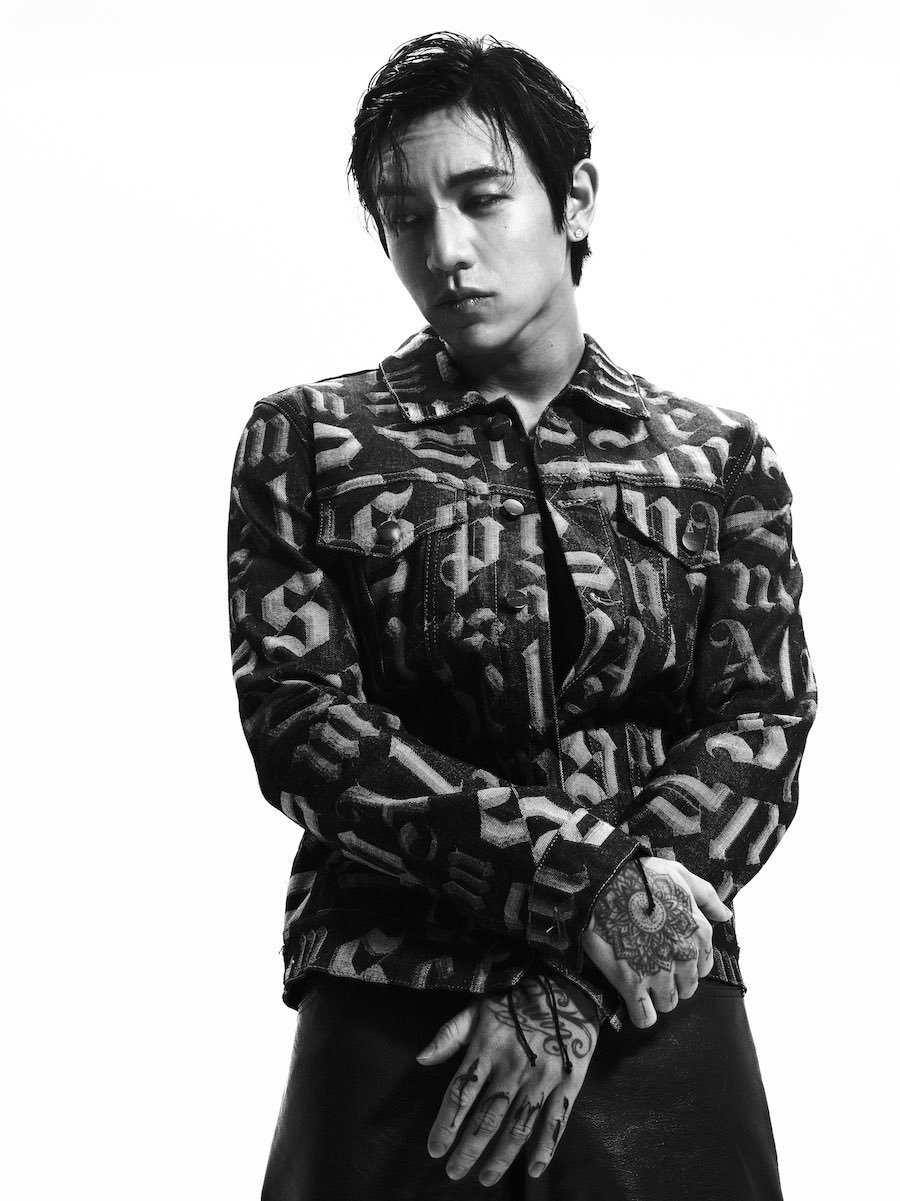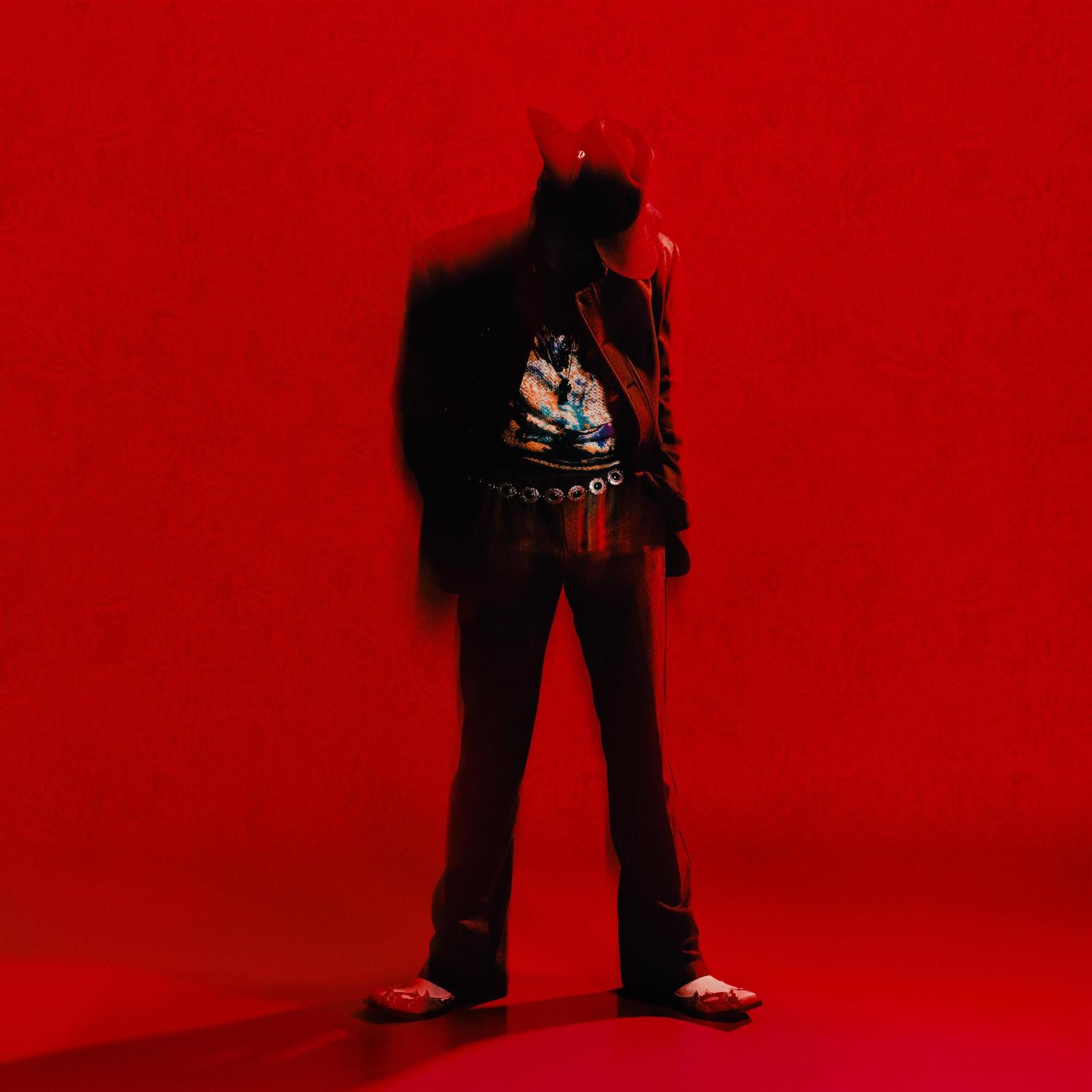Kundo Song
“I set my wings on fire,” wails the voice of a man overflowing with sorrow. Another voice, eerie and muffled, narrates what took him to this extreme — fallen stars, a world dividing. They both resound over a dismal orchestra, an atmosphere so dark you can almost touch it, until everything suddenly vanishes into a thunderstorm. Such is “Seraph,” the opening track to the first studio album from DPR IAN, Moodswings In To Order, out now.
The track picks up right where “No Silhouette,” the burning closer off DPR IAN’s 2021 debut EP, Moodswings In This Order, left. But while it resigned and spiralled (“I lost myself under the sun / I got too close and now I’m burning,” he sings), “Seraph” is intentional. It foreshadows an even deeper dive into the universe of MITO — the leading character of both albums, created by IAN to process his struggles with bipolar disorder and transform them into art.
Stream Moodswings In This Order:
Like Icarus, who saw his wings melt as he hovered near the sun, IAN knows that he will fall. But he also knows that he will soar. It’s all part of his story. Although not intentional, the 31-year-old multi-hyphenate found in the Greek tale a mirror to his experiences, and consequently to the path of MITO. “I have ‘Burn’ [tattooed] on my left hand,” he tells Rolling Stone AU/NZ over a Zoom call, inching his hands closer and caressing the ink letter by letter. “I’ve always felt like I was burning when I went down, and it goes with that perfectly. Sometimes I get manic, I get too high. And when I’m up too high, I start plummeting. Every up must come down, right?”
It’s not that it’s easy for IAN to burn everything and start anew, but he’s been doing it for all his life. “I’m so into characters that I consider every stage of my life to be a different me, therefore, a different name,” he says.
Born Christian Yu in Sydney, Australia, he attended to his Korean name, Ba-Rom, throughout his early years. As a teenager, he was part of a heavy metal band and later a keen b-boy, posting videos on YouTube under the alias B.yu. When he was 18, he moved to South Korea and eventually became Rome — the leader of K-pop group C-Clown, which lasted from 2012 to 2015. Then came simply Christian, a character for the phase where he was “trying to find my artistry,” ultimately leading him into today’s DPR IAN. “Overall it’s me, but I’m not the same as I was 10 years ago,” he says of this multiplicity. “It gives me a more clear understanding, and feels like I’m on a journey with this character.”
Love Music?
Get your daily dose of everything happening in Australian/New Zealand music and globally.

DPR IAN. Photograph by Kundo Song
The letters “DPR” in front of his current name stand for Dream Perfect Regime — a multimedia collective he runs alongside DPR Live, DPR Cream, and DPR REM (who also produced this album). They handle all the gears on their own, from business management to visual arts, and have proven how an independent label can thrive in the Korean music industry. For many years, IAN was mainly behind the cameras as their in-house director and editor, working with names like iKon’s Bobby (“HOLUP!”) and Mino (“Body”), but his multifaceted nature knew that it was time to stand under the spotlight again.
He reveals that releasing his debut EP last year brought up a lot of fear and doubt. “Directing and being in front of the camera was such a big hurdle. Not only did I have to play [MITO], this character that I was manifesting for so long, that [takes] so much energy, but I also had to get the set up, the lighting, the scene, the composition of it, and I had to make sure that was perfect,” he says. “All these people that I was shooting with, they were so used to seeing me as a director, but now I’m all glammed up and I’m acting. It was honestly very embarrassing in the beginning, but to sell the picture I did what I had to do, pretended no one was in the room and shhh let’s go,” he laughs.
Over email, DPR REM says that he’s witnessed a lot of great artists, but that “as unbiasedly as possible — IAN is a different breed. He literally does everything himself. He’s a one-man army. I’ve watched him do all this and more from the sidelines and no one I know can do all of this to the level he does. It truly feels like you’re witnessing a genius at work.”
While IAN, in his disarming modesty, would likely be thankful but laugh it off, REM’s words ring true. Very few people have a skillset as wide as his, much less the sensibility and courage to transpose the personal into the universal, and tie it up with a result that is both easily engaging and deeply meaningful. “A lot of times I do question myself,” IAN says. “I’m like, ‘What am I doing?’ but I just keep reminding myself it’s for the story. I feel like I’m constantly upgrading as an artist, it’s definitely taking a lot out of me, it’s insane. But it’s a very humbling experience, I learn a lot about myself.”
A self-confessed perfectionist (“I gotta learn to let go, I’m such a hoarder,” he says), you can see it even in the way he meticulously adjusts his hair throughout the call, setting a strand to fall perfectly between his nose bridge and the start of his right eyebrow.
He talks a lot with his hands, which emphasises the tattoos adorning most of the exposed skin from his fingers to his forearms today — as if the drawings are yet another way of reaching out, of telling his story.
IAN’s commitment to narrative is one of the key factors in why everything he does is so impactful. He doesn’t shy away from the shadows and the pain, because “chasing the lows is what makes a lot of dark, beautiful things come to life.”
This realisation made him stop resenting his mood swings so much, and instead learn to love their teachings. “I realised there’s no such thing as balance for someone like me. I’ve been trying to find [it], and that’s why it just spiralled into more problems. When I accepted the idea that it shouldn’t be balanced, that’s when I started finding more peace,” he adds.
REM agrees with that perception, saying that, “from everyday life to his career, I’ve seen both the highs and lows and, ironically enough, I feel both were necessary in making him the talented and creative individual he is today.”

DPR IAN. Photograph by Kundo Song
So when MITO comes into IAN’s life, whether onstage or offstage, he embraces it. He describes the character (whose name came from the word “myth” in several Latin languages) as “a living myth, an archangel that takes the form of a human,” but also as an overall influence. In the MVs, MITO is represented by himself — but deranged. His scenes are often black and white, and his left eye is a blank canvas. He wears a replica of the organ as a ring on his index finger.
“Metaphorically, when I’m in that [character], I see the world differently,” he says, covering one eye with his hand. “But the eye is also a homage to my visual directing. [It’s] something so crucial when I see things, so I wanted to play into that factor.” He also believes that everyone has their own MITO. “In this day and age, I’m sure everyone’s going through something, you know? And if it helps them to better cope with that, then that’s why I’ve given the character life,” he adds.
While IAN’s debut EP was an introduction to the essence of MITO, this LP — dubbed MIITO — is more story-driven. “It’s the origins of where MITO came from, how he became MITO, and it goes to the present, now. It’s like a short film,” he explains. These words don’t come lightly. As if the music wasn’t enough, IAN indeed made a short film out of most of the tracklist, with the addition of a behind-the-scenes documentary to be released in the next weeks.
At the moment of writing, MIITO’s luxurious visuals can only be seen through teasers — an extravagance of masks and jackets, feathers and furs, glitter and dust — but just listening to the album is an invitation to all senses. Weaving through the highs and lows of its fallen protagonist, the 12 tracks offer a cinematic blend of R&B, pop, rock, and electronic music. It paints a picture so vivid, so him, that IAN couldn’t even pick a title track. “Everything has a little magic of its own,” he says.
Across the lyrics, he roams through otherworldly kingdoms, such as “Avalon” and the ghost town of “Calico,” loses himself in the despair of “1 Shot” and “Merry Go,” feels inebriated in “Ribbon,” and introduces us to new characters like “Mr. Insanity” and “Miss Understood.” “She falls in love with IAN, but she has actually fallen in love with MITO,” IAN says of the latter. “To him it was hell, but to her it was paradise.” He also explains that “Mood” and “Winterfall” — the two songs that start with a singular “MITO” tagline, as if announcing an entrance into his domains — play a major role in “shaping who MITO is.”
In turn, MITO shaped IAN’s music, but also had a cathartic effect on his life. “It has gotten me to understand myself,” he says. “I realised I had to be MITO to make some of these songs.” As he prepares to embark on a nearly sold out, 33-date world tour with the rest of DPR this September — stops in Asia and Australia yet to be announced — being able to channel the character live became of utmost importance. “I’m pretty nervous. I’m such a perfectionist that I want to just absolutely blow [the audience] away,” he admits. “It’s not just method acting. I have to be genuine about what I feel, at that very time and moment, for anything to come out.”
That’s the second key factor in IAN’s mesmerising artistry: truth. And his truth is always accompanied by kindness, a special warmth that translates in his laidback Australian accent, or in the way he breaks into a pure, wistful laughter sometimes. He knows he can’t shut his feelings away, even the darkest ones — or it would invalidate his core mission. “One of the biggest things I’ve learned is that I’m a storyteller, rather than just an entertainer,” he says. “Everything that I’m doing is so I can tell my story better.”



































